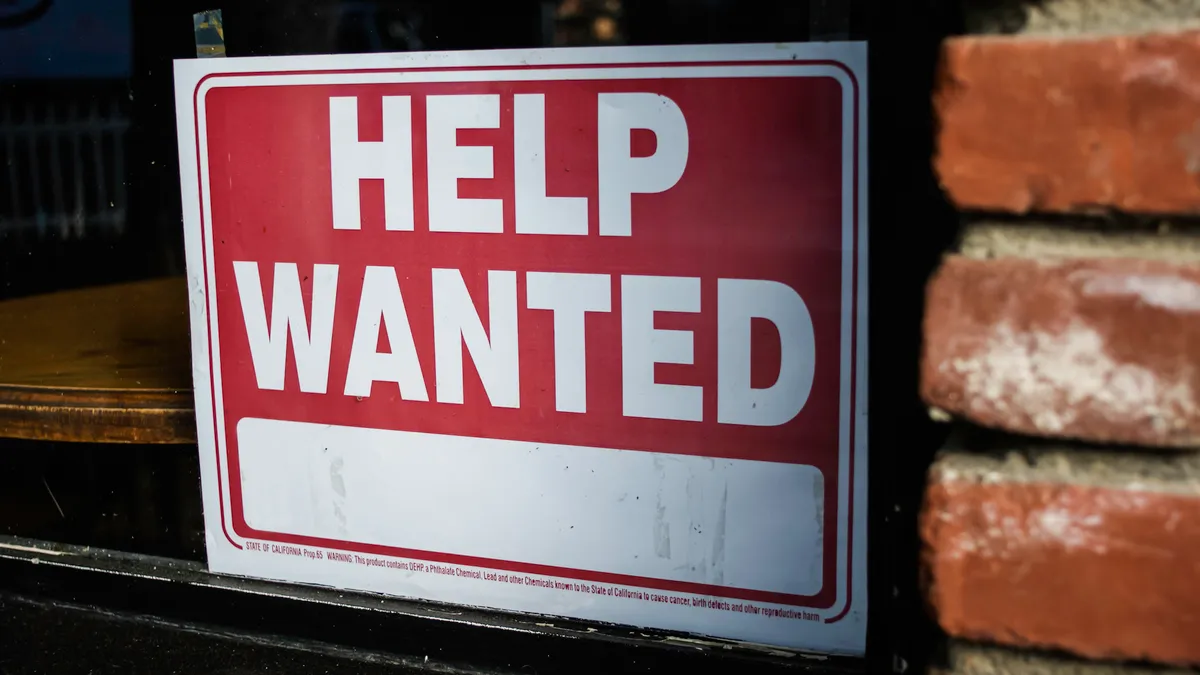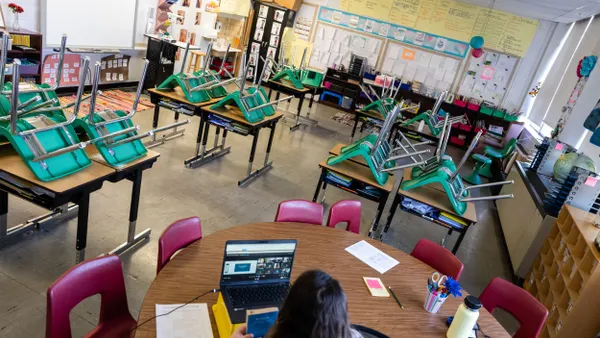Dive Brief:
- The Florida Department of Education and the Florida Education Association are at odds over statewide teacher vacancy data for the 2024-25 school year. The department said last week that vacancies are down 13.3% compared to the previous school year.
- As state education officials touted the figures, the teachers union said just days before that the state still has 5,007 instructional vacancies this school year, an uptick from January levels, but a decrease from the number reported in August 2023.
- Despite this disagreement, “these two datasets are showing a similar trajectory,” said Chad Aldeman, a researcher who analyzes teacher workforce data. In fact, the FEA data still shows that Florida instructional vacancies declined by 27.6% between the 2023-24 and 2024-25 school years — from 6,920 to 5,007 vacancies.
Dive Insight:
The department vaguely refuted in a statement that other sources “have attempted to use inaccurate data to report inflated teacher vacancy data.”
When FEA shared its vacancy data, the teachers union noted that the state has “not made significant strides in fixing the critical teacher shortage.”
“It should not be lost on anyone that, right now, nearly 5,000 classrooms do not have a professionally trained teacher, impacting potentially over 100,000 students,” said Andrew Spar, FEA’s president, in a statement.
The case in Florida reflects a broader challenge school districts and states face as they try to accurately gauge and measure teacher shortages.
Over the years, federal legislators have introduced a variety of bills seeking to create a more unified collection of data regarding the supply and demand of teachers, particularly among state education agencies.
Measuring and collecting teacher shortage data is “a mess” and differs widely by state or locality, Aldeman said. Aldeman previously worked in the U.S. Department of Education under the Obama administration and is the former policy director at Georgetown University’s Edunomics Lab.
He added that tracking teacher vacancies is likely not the best data point when measuring educator shortages because it largely depends on when the data is collected. Since schools do most of their hiring in July and August, he said vacancies can only be compared year over year from the same time period in the summer. “It means that you can’t just compare any given month to any other given month.”
Additionally, vacancy data can be unreliable because it may only measure the number of teachers that districts say they want to hire versus providing a count of how many teachers they can realistically hire, Aldeman said.
For instance, some districts may agree to hire and post job openings for certain positions like school nurses or counselors as a result of union negotiations, he said, “but it's a soft plan, and they don't actually have any realistic hopes of filling those vacancies, and so it just becomes like a squishy target to try to quantify.”
The Florida Education Association said it collected statewide data by analyzing district websites that post their vacancy rates twice a year. While the Florida Department of Education said it received vacancy data directly from districts.
“Florida has raised teacher pay, supported teachers in the classroom and created new pathways for qualified individuals to enter the teaching profession,” said Florida Education Commissioner Manny Diaz, Jr., in a statement. “While the naysayers use the same tactics year after year to discredit Florida’s success in Education, once again the numbers speak for themselves.”
On the flip side, when the FEA cited its own teacher vacancy data, the union said there are concerns that “classrooms are overflowing with students, and teachers are scrambling to find more desks and chairs.”
Overall, teacher shortages nationwide appear to be easing within the past several years since the onset of COVID-19, Aldeman said. That’s likely because federal pandemic relief funds sent directly to schools allowed districts to staff up, he said.
One indicator of this is that less public schools are reporting that they feel understaffed between the 2023-24 and the 2022-23 school years — at 45% versus 53%, according to a survey released in October 2023 by the National Center for Education Statistics.






 Dive Awards
Dive Awards







